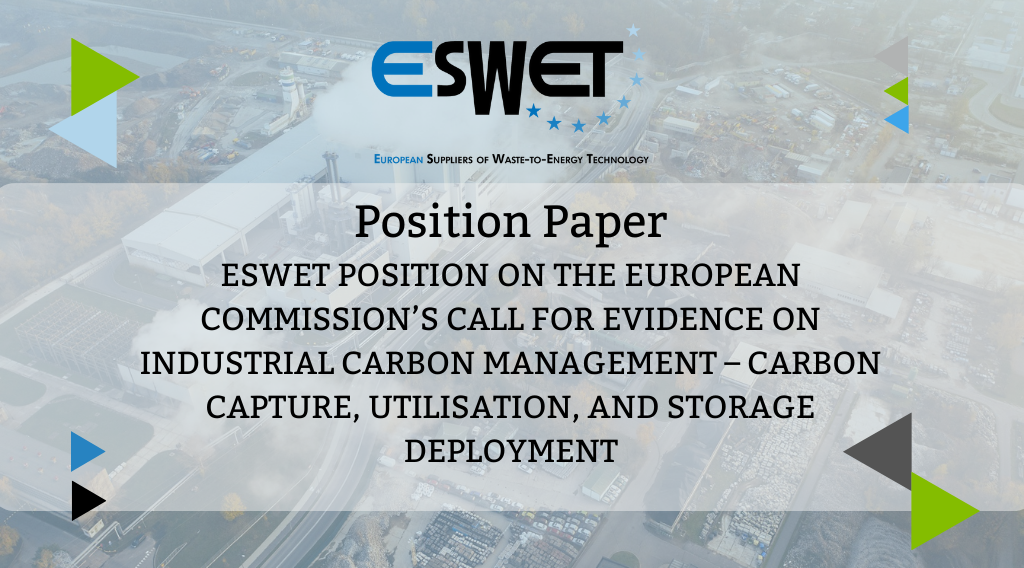ESWET Position on the European Commission’s Call for Evidence on Industrial Carbon Management – CCUS Deployment

Technologies manufactured by the ESWET members are the heart of most of the Waste-to-Energy plants in Europe and worldwide, allowing the recovery of energy and materials from non-recyclable waste. Waste-to-energy plants treat Municipal Solid Waste (MSW) fractions that can neither be reused nor recycled, playing a key role in reducing waste volume and emissions to the environment.
In addition to that, the WtE sector contributes to the EU energy security by recovering valuable energy from the incineration processes. The energy produced from waste represents not only a partly renewable energy source, being the waste treated in WtE plants of a biogenic nature, but also a valid substitute for other alternative renewable energy sources. Compared to wind and solar energies, for instance, that rely on unpredictable factors, energy from waste is not subject to continuing fluctuations and therefore is plannable and reliable.
Furthermore, when biomass is combined with Carbon Capture Utilisation and Storage (CCUS), the industry reaches a net removal of CO2 from the atmosphere, resulting even in negative emissions. Yet in 2022, the International Panel on Climate Change highlighted in its report that the implementation of CCUS into plants will bring additional environmental benefits by allowing the plants to become net zero or even net negative emissions energy sources, with the potential to capture “about 60 to 70 million tons of carbon dioxide annually” only in Europe.
CCUS technology is widely recognised as an important tool to decarbonise the EU economy by 2030, 2040, and 2050. Across Europe, and even globally, WtE plants are at the forefront of implementing CCUS on waste-to-energy plants with many projects already in place.Moreover, the sector is one of the cost-competitive options for CCUS. Coupling this technology into the WtE plants is, thus, not only a quite valuable option for the sector, but it’s also the only solution to achieve net zero emissions, and fully de-fossilise itself. Both goals will be unachievable without the integration of CCUS.
That is why, ESWETcall on EU legislators to include the waste sector in the upcoming strategy.
As ESWET, we greatly welcome this Commission’s initiative to catch the international momentum for CCUS and we drafted some recommendations for policymakers to better support the deployment of this technology:
- It’s important and imperative to acknowledge the benefits of coupling CCUS applications in Waste-to–Energy plants. Including the waste sector in the upcoming strategy is not only crucial to safeguard the waste hierarchy and boost the circular economy but is also the only solution for the sector to achieve net zero emissions, and fully defossilise itself.
- A fully harmonised legislative framework is the conditio sine qua non to pave the way for the future adoption of a broader EU strategy on CCUS. Both existing and upcoming legislative files must acknowledge the full spectrum of CCUS applications.
- European and national investments are also necessary to make sure that CO2 transport and storage infrastructures are out in place and that EU industries, especially the so-called hard-to-debate ones can follow their defossilisation process and reach net zero as soon as possible.
The full position paper by ESWET on the European Commission’s initiative on carbon capture technologies is available [here]